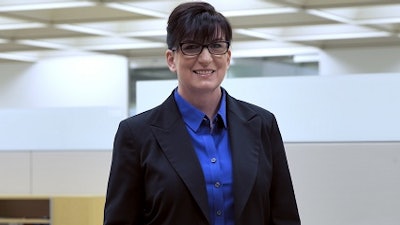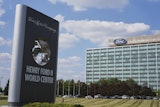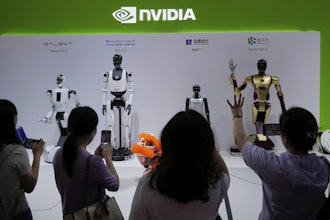
How does one of the largest and most accomplished industrial companies in the United States operate like the world’s biggest startup? For GE (General Electric), it’s always been a lot about evolving to solve challenges.
Today, GE is moving from a traditional, accomplished global industrial company into an agile, market-leading digital industrial company. When the company introduced software-enabled services to complement its manufacturing business, it embraced new business models and redefined relationships with customers, suppliers, and partners.
Along the way, GE has invested heavily in open innovation and crowdsourcing as a tool for moving faster and smarter. They created a new system that breaks down the boundaries between their traditional businesses and target markets to create a connected and cohesive global knowledge exchange. More than ever before, each GE business shares expertise, technology, markets, and structure – enabling more collaborative and meaningful research, innovation, and learning.
Supporting this approach in a company as large, complex, and mature as GE was no easy task. Dyan Finkhousen leads this initiative through GE’s Center of Excellence for open innovation and crowdsourcing, and in GLG’s Leading Learners video series she discussed the impact of embracing new ways of learning on GE’s continued innovation. Here are some key lessons she shared:
Centralization Leads to Greater Efficiency
When GE began this journey, they sought a company-wide open innovation process that would yield quick and effective results. The centralized structure creates an efficient, compliant innovation transfer system where people with outside expertise, or expertise in other business units, can help GE teams solve pressing issues. GE teams across the company now rely on these proven and nimble methodologies. To further the impact, Finkhousen’s team distributes lessons learned and best practices across the company, so that peers can benefit from each other’s journeys.
“We realized that centralizing the open innovation and crowdsourcing research, partnerships, processes, and best practices into one operating unit would add a lot of value to our internal teams,” says Finkhousen. “Our business leaders consistently have to balance priorities, deliverables, and resources. By providing them access to other expert resources within, and outside of, the company that can help them with those priorities, we help them turbo-boost the development process.”
Real-Time Systems Make All the Difference
Curating meaningful and sustainable relationships with ecosystems of on-demand experts is essential. GE typically engages internal and external expert resources when business verticals consider new markets and business models. A reliable community of real-time experts ensures the teams have more options at their disposal, and can move with greater speed and confidence.
“The markets we serve are evolving at unprecedented rates. We value partners that help us efficiently connect with the right thought leaders and experts around the world so we can accelerate our learning process and better serve customers.”
Finkhousen recommends that enterprise learning systems include access to distributed, real-time expert channels This approach helps GE teams continue to evolve and improve their culture, performance, and value delivery.
Preparation is Vital
To get the most out of conversations, collaboration, and crowdsourcing, Finkhousen recommends spending time framing the target outcomes and the operating context. She advises being clear about what you want to get out of the endeavor and developing clear expectations about what success looks like.
“Once we define what a successful outcome looks like, we trace back through the vast network of crowdsourcing options to design the right approach,” says Finkhousen. “We confirm the target outcomes and the gaps, and engage the expert communities that are best suited to optimize outcomes.”
Know What You Don’t Know
Finkhousen reminds teams that they should deploy their resources thoughtfully, assessing where they could improve outcomes if only they had access to better information and deeper insights. This positions teams to remain open to wherever the inquiry may take them. At GE, Finkhousen’s team coaches colleagues to allow for an open narrative.
“We also often find that efforts to learn from experts outside of our business may be constrained by our own deep domain expertise. Teams may unintentionally limit their capacity to learn by simply applying industry terminology and assumptions to the way they engage their learning partners. Applying this ‘operational shorthand’ can be very efficient when working within our own teams, and on projects that may not require innovative solutions. Conversely, it can also limit the insights teams can gain when collaborating with experts in other industries,” said Finkhousen. “We improve outcomes by simply reframing learning objectives in more fundamental terms – in ways that can easily transcend market boundaries and inspire other expert connections.”
John Donoghue is head of corporate markets at GLG. To learn more about GE’s open innovation and crowdsourcing, watch Dyan Finkhousen on GLG’s Leading Learners.























